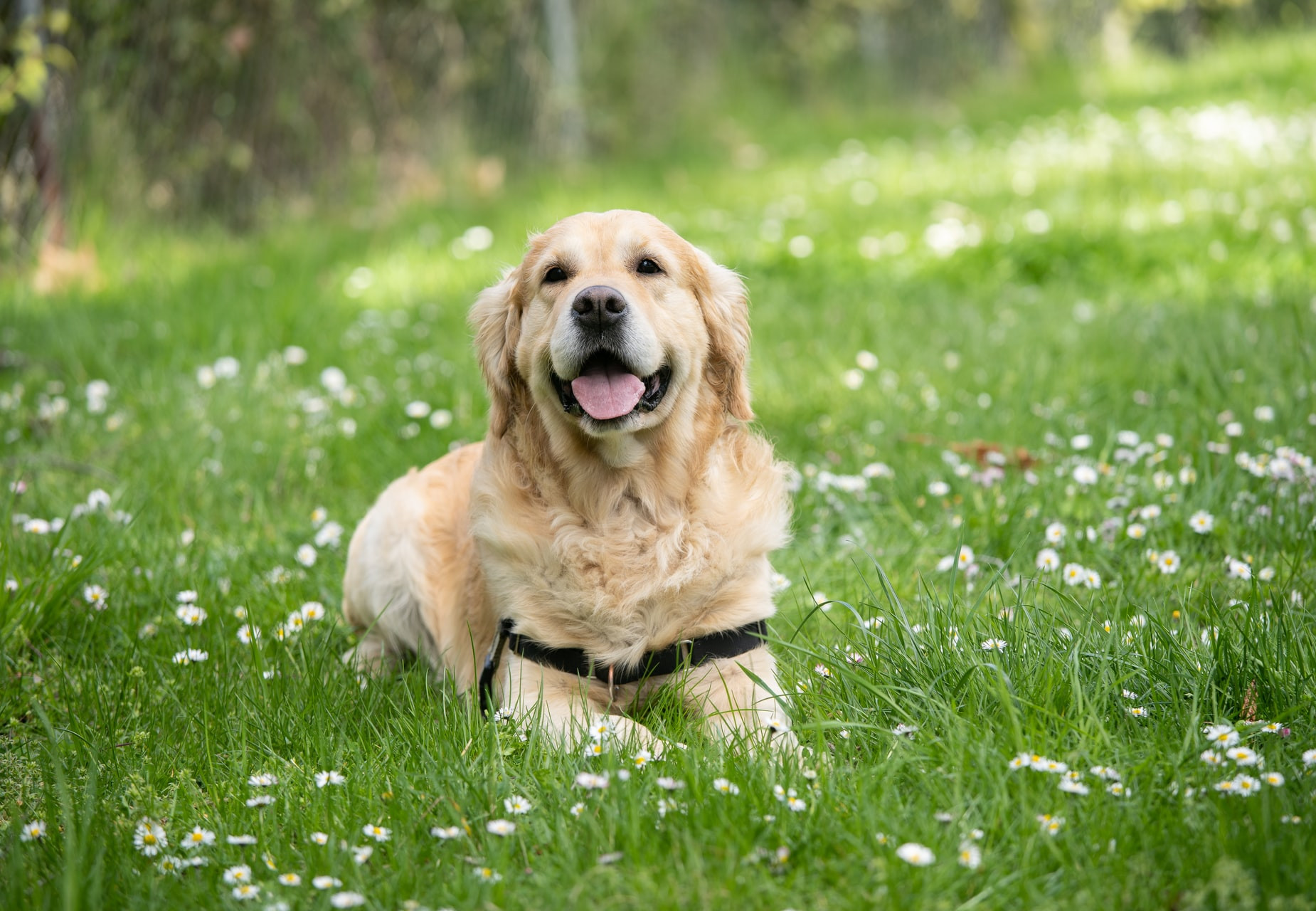
Dangers Posed by the Oak Processionary Moth
How to best protect your dog from the poisonous caterpillar
The oak processionary moth (Thaumetopoea processionea) is a type of moth whose caterpillars are found in oak forests. The most dangerous part of these caterpillars is their tiny hairs, which can pose a serious health risk to dogs. The first part of the moth's scientific name comes from 'thaumetopoein' which is the irritant protein found in its hairs1.
The caterpillars live in large groups and move around the trees in a line, with one following behind the other2,3. The highest risk to dogs happens from May to July when the caterpillars develop their stinging hairs. Both the caterpillars and their nests can pose a threat to dogs4–6.
How to recognise the caterpillars?
Learning to identify the caterpillars and their nests is important to be able to react in time to protect your dog.
The colour of the caterpillars changes with age. The freshly hatched larvae have a dark head and brown body. With increasing age, the body takes on a grey colour. The oldest caterpillars are easier to identify as they have a dark stripe with whitish lines on each side7.
During their third larval stage, which occurs around May or June depending on the weather, they develop fine, short, hollow stinging hairs8,9 that cover their entire body. These hairs are particularly dangerous because they contain a toxic substance. The number and length of these hairs also increase with each molt10.

Where do they build their nests?
Once the caterpillars are older and larger, they migrate along the oak tree and build their nests, where they spend most of the day moulting and only leave them to feed at dawn and dusk5. The nests can usually be found on the trunks and branches of oak trees in early summer. They are usually shaped like a dome or teardrop and come in various sizes. When freshly built, the nests are silky white in color, but over time, they change to a brown hue, making them harder to spot4.
What makes their hairs so dangerous?
The moths stinging hairs are equipped with barbs (setae) and contain the problematic protein thaumetopoein. When these hairs come into contact with skin or mucous membranes, they penetrate and attach themselves using their tiny hooks and secrete venom. This venom can cause severe itching, skin reactions such as rashes, fever, and vomiting in severe cases. Additionally, it may lead to eye irritation (conjunctivitis), respiratory issues, and possibly allergic reactions that could escalate to life-threatening anaphylactic shock. In the worst cases, dogs may suffer from suffocation leading to death9,11,12. Make sure to see a veterinarian if your dog shows signs of these symptoms.
Also be aware that direct contact with the larvae isn't the only danger, as they may shed their hairs as a defence mechanism if they feel disturbed or threatened6.
Precautionary measures
Top tips to best look after your dog around the caterpillars
- Ensure to check for any warnings issued by the local authorities
- Familiarise yourself with the appearance of the caterpillars and nests
- If possible, avoid walking dogs in areas with a lot of oak trees and keep your dog away from trees showing signs of defoliation
- Give your dog a wide berth around trees on which the larvae are visibly moving
- Ensure your dog does not sniff, lick, or disturb any nests, and keep them on a short lead if necessary
- Monitor your dog for symptoms if they comes into contact with caterpillars or nests and seek treatment if needed
References:
1Oak processionary moth (Thaumetopoea processionea). Forest Research. [accessed 2024 Jul 10]. https://www.forestresearch.gov.uk/tools-and-resources/fthr/pest-and-disease-resources/oak-processionary-moth-thaumetopoea-processionea/
2Ecology - LIFE Oak Processionary Project. 2020 Nov 30 [accessed 2024 Jul 10]. https://oakprocessionary.life/oak-processionary-caterpillar/ecology/
3Oak processionary moth ( Thaumetopoea processionea ). Carson A, Irvine R, Foster AP. Veterinary Record. 2015;177(3):79–79. doi:10.1136/vr.h3840
4Managing oak processionary moth in England. GOV.UK. 2024 Apr 26 [accessed 2024 Jul 8]. https://www.gov.uk/guidance/managing-oak-processionary-moth-in-england
5Oak processionary moth / RHS Gardening. [accessed 2024 Jul 10]. https://www.rhs.org.uk/biodiversity/oak-processionary-moth
6Beware of stinging hairs from processionary caterpillars! Anses - Agence nationale de sécurité sanitaire de l’alimentation, de l’environnement et du travail. 2024 Feb 23 [accessed 2024 Jul 10]. https://www.anses.fr/en/content/beware-stinging-hairs-processionary-caterpillars
7Oak Processionary Moth [accessed 2024 Jul 10]. https://entnemdept.ufl.edu/hodges/ProtectUs/presentations/oakprocessionarymoth.pdf
8Clinitox Giftsubstanzen: Vergiftungen Kleintier - Gifte von Arthropoden. [accessed 2024 Jul 8]. https://www.vetpharm.uzh.ch/clinitox/toxdb/KLT_089.htm
9Gefahr durch den Eichenprozessionsspinner. BMEL. 2024 Jan 29 [accessed 2024 Jul 10]. https://www.bmel.de/DE/themen/wald/wald-in-deutschland/eichenprozessionsspinner.html
10Kissingen VL| B. Eichenprozessionsspinner. LABOKLIN Bad Kissingen. 2021 [accessed 2024 Jul 10]. https://laboklin.de/de/eichenprozessionsspinner/
11Lamy M, Pastureaud M-H, Novak F, Ducombs G, Vincedeau P, Maleville J, Texier L. Thaumetopoein: An urticating protein from the hairs and integument of the pine processionary caterpillar (Thaumetopoea pityocampa schiff., Lepidoptera, Thaumetopoeidae). Toxicon. 1986;24(4):347–356. doi:10.1016/0041-0101(86)90194-7
12Oak Processionary Moth (Thaumetopoea processionea) | Department of Agriculture, Environment and Rural Affairs. DAERA. 2019 Jul 8 [accessed 2024 Jul 8]. https://www.daera-ni.gov.uk/articles/oak-processionary-moth-thaumetopoea-processionea

